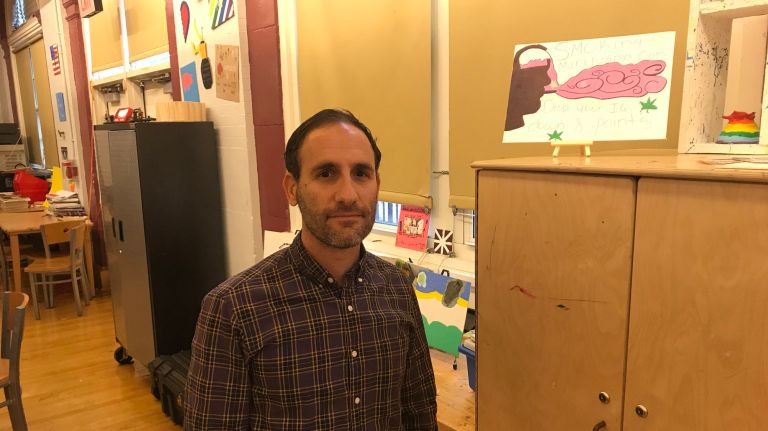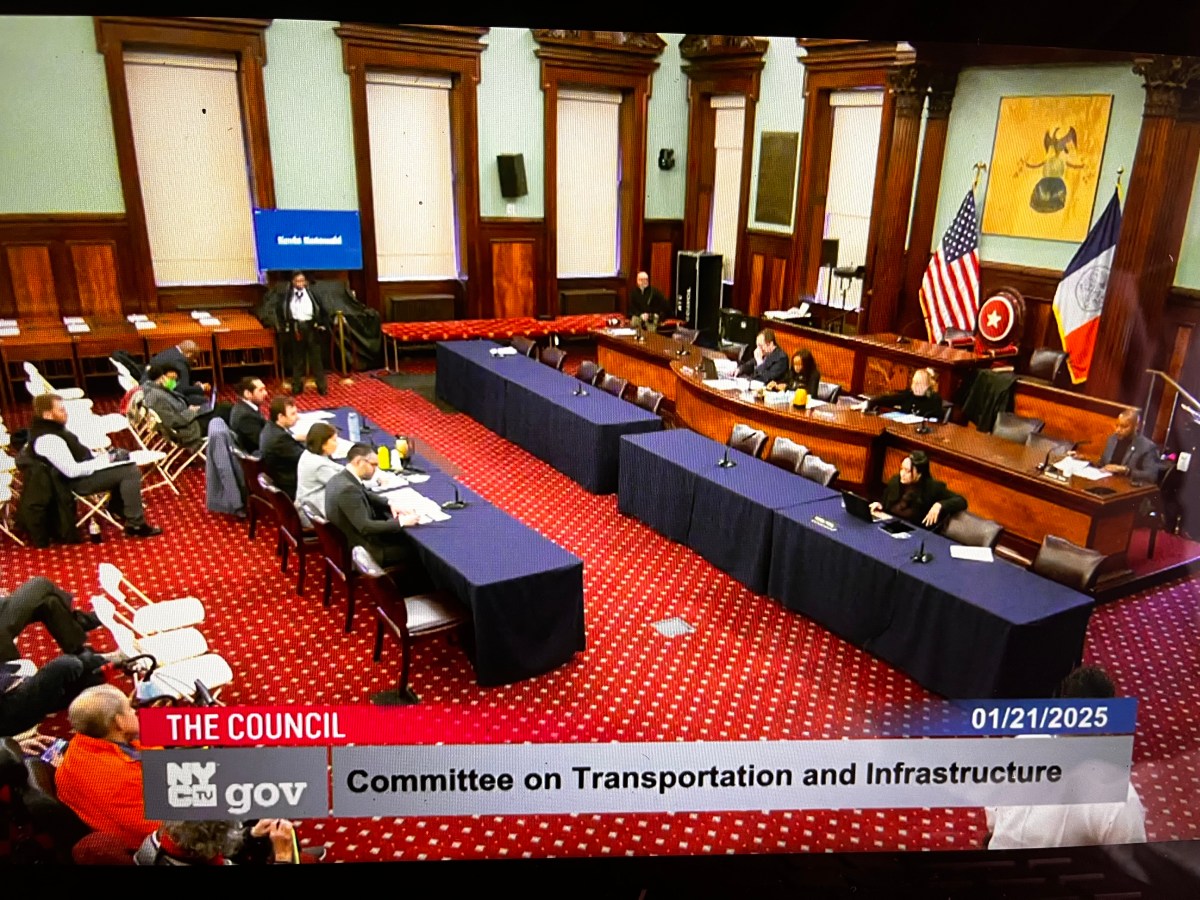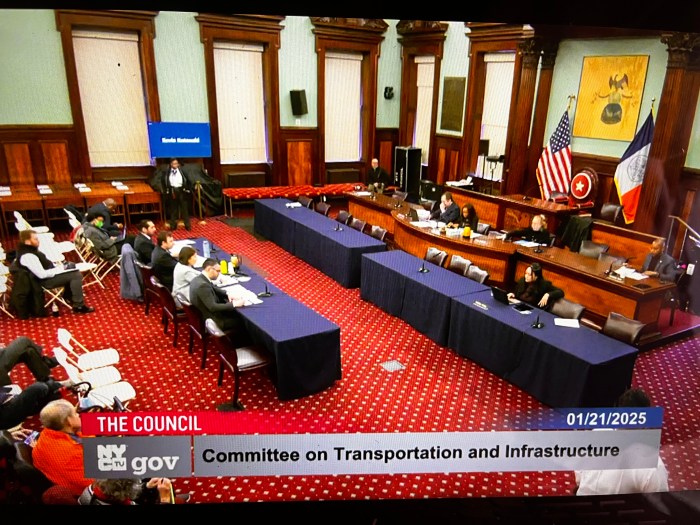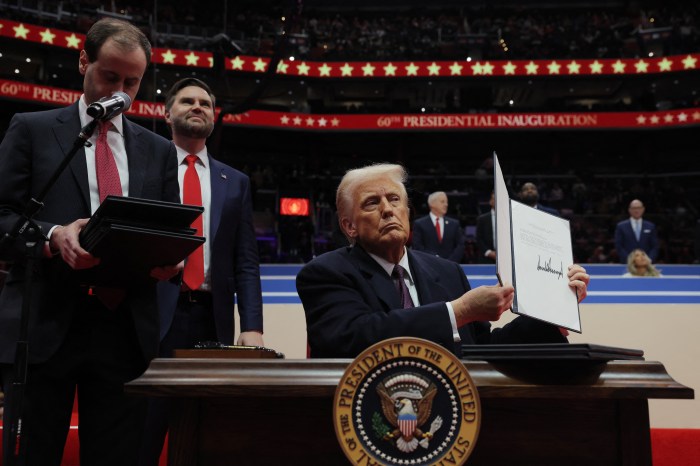
Midway through the first of a double-period class in Dr. Lou Lahana’s social action-themed maker space, eighth-grader Abdoul was waiting for his wood glue to dry.
He was making a rectangular wooden model that would become a tableau of lush, green moss: “a piece of nature inside,” he said, to remind you of how beautiful the natural world is.
The class at PS/MS 188, a diverse school on Houston just off the East River, looks a little different than most around the city, but it uses an educational philosophy that some school leaders are looking at to help improve and diversify city classrooms. Abdoul’s project is meant to be larger than wood and adhesives: it started with him watching the news, he says, about forest fires in the Amazon. He researched the importance of the rainforest and the animals that live there, and he looked for a way to remind others about it, too.
This was just one of the ongoing projects on a recent afternoon in Lahana’s domain. Other students were making a bionic arm, a piece of guitar music, a wooden clock, and digital cartoons about e-cigarettes. Lahana, 43, a school library media specialist who coordinates the maker space, warned that the scene of some 30 students might show “a little bit of chaos” but also “passion-based learning.”
This type of learning has roots in the theories of the University of Connecticut’s Joseph Renzulli, whose ideas have been used on and off in New York City and around the country.
Renzulli popped up prominently once again in NYC politics just before the start of this school year, with the release of a bombshell education report from a group set up by Mayor Bill de Blasio. The report advised swift action to desegregate schools, including the general elimination of gifted and talented screening as currently done.
The producers of this report have floated some other ways to create alternative enrichment, including dual-language instruction or some of Renzulli’s theories.
One influential piece of this is Renzulli’s “enrichment triad,” which preaches another way beyond just lecturing the same material to every student and having everyone do the same work.
“The development of any high-level talent starts with interest,” Renzulli said in an interview.
Renzulli prefers exposing students to various topics, teaching them how to work in a high-level way, and finally, giving them the opportunity to deeply work on things they find fascinating.
This final portion, or “Type 3,” is what Lahana’s class is largely about. The class had started with a short intro about the general subject for the next couple weeks, climate change, plus some suggestions about projects that deal with environmental issues like recycling. But then the students were turned loose to work on projects.
As Lahana noted, this can include some chaos. That afternoon class included a basketball being tossed around along with every possible rendition of the “that’s what she said” joke. One boy was absentmindedly drilling a hole into a roll of tape. One student on a laptop looked through games that he’d made himself through the computer programming learning tool Scratch. He clearly had some facility with the topic but Lahana bemoaned the fact that the activity didn’t have a social impact (the main subject of the class).
There are guardrails. Lahana “conferences” with students to try to suggest projects or direct them. He assigns “idea journals” in which students outline their research, which make up a part of the students’ grades. Lahana also had additional adult supervision in the class that day via two helpers who oversaw heavy machinery and other tasks.
With or without the help, the chaos may be a lot for the types of critics who are leery of educational experimentation, particularly when work wanders from traditional academic instruction.
And the social justice themes often lead the class toward what Lahana notes is the “third rail,” partisan politics. The room is decorated with posters and student projects including the word “Impeach” next to President Donald Trump silhouettes and other slogans about the NRA and immigration. Lahana says current politics affects his students’ lives and he tries to take a measured approach and show all sides. “There’s nothing we don’t talk about,” he says.
The broader idea is to get kids engaged in and excited about learning, something that can be done in classes denoted “gifted” or not. Some studies have shown that Renzulli’s theories about enrichment can be effective across socioeconomic levels, a major challenge for the city Department of Education.
Renzulli suggests that it would be divisive if not impossible to get rid of traditional gifted programs, so he suggests extending “more enrichment opportunities to the larger population.”
“Politically, that’s the only thing that’s going to work,” he says.
Lahana’s class is a cluster as opposed to a regular subject, and to extend it would take a big conceptual shift plus more teachers and resources.
Renzulli says he has been to Lahana’s class and says Lahana “does some remarkable work with kids.”
For his part, Abdoul the student seemed engaged in his rainforest project, considering if a blowdryer would speed up the glue-drying, discussing the scientific theme. He likes the class in general, “because we get to do what we like.”



































